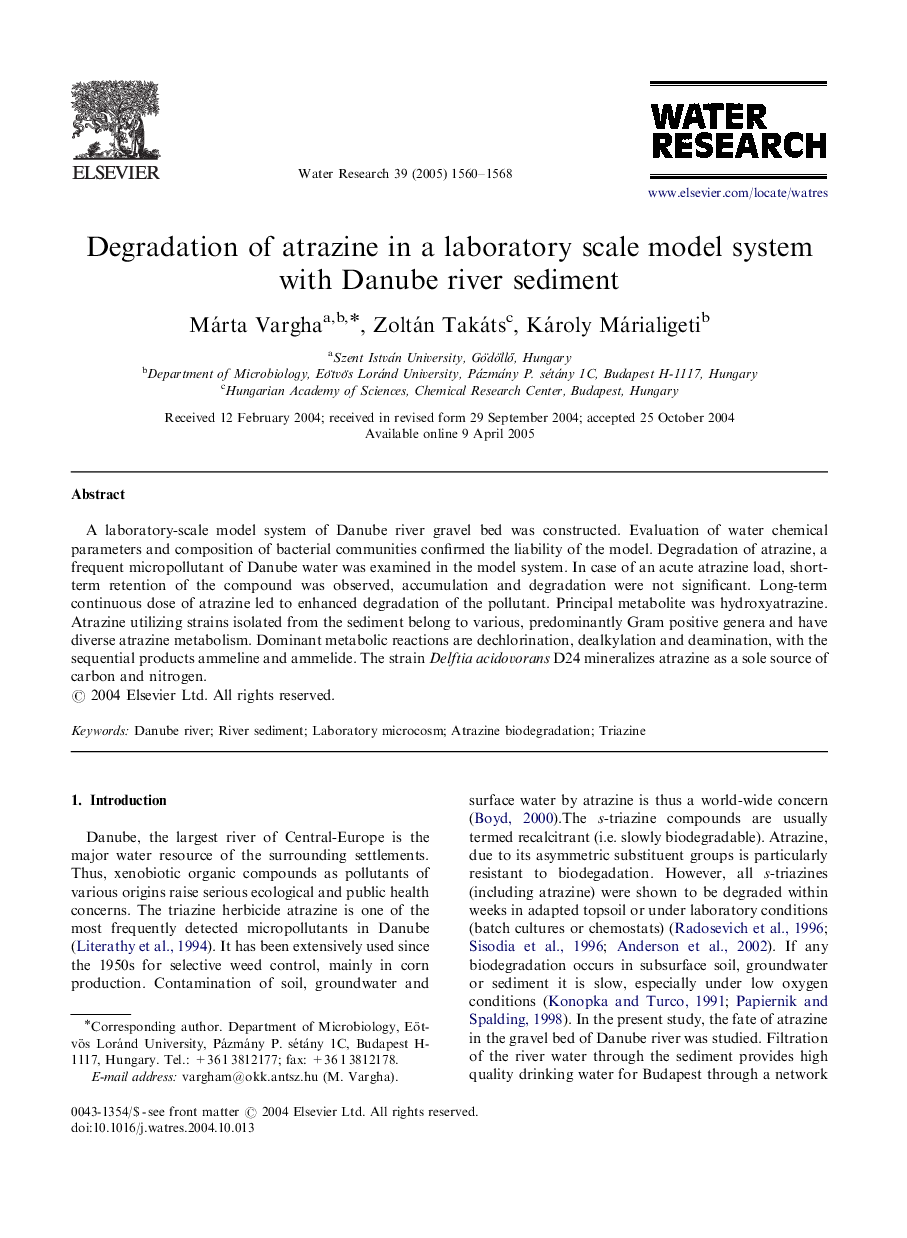| Article ID | Journal | Published Year | Pages | File Type |
|---|---|---|---|---|
| 9468205 | Water Research | 2005 | 9 Pages |
Abstract
A laboratory-scale model system of Danube river gravel bed was constructed. Evaluation of water chemical parameters and composition of bacterial communities confirmed the liability of the model. Degradation of atrazine, a frequent micropollutant of Danube water was examined in the model system. In case of an acute atrazine load, short-term retention of the compound was observed, accumulation and degradation were not significant. Long-term continuous dose of atrazine led to enhanced degradation of the pollutant. Principal metabolite was hydroxyatrazine. Atrazine utilizing strains isolated from the sediment belong to various, predominantly Gram positive genera and have diverse atrazine metabolism. Dominant metabolic reactions are dechlorination, dealkylation and deamination, with the sequential products ammeline and ammelide. The strain Delftia acidovorans D24 mineralizes atrazine as a sole source of carbon and nitrogen.
Related Topics
Physical Sciences and Engineering
Earth and Planetary Sciences
Earth-Surface Processes
Authors
Márta Vargha, Zoltán Takáts, Károly Márialigeti,
